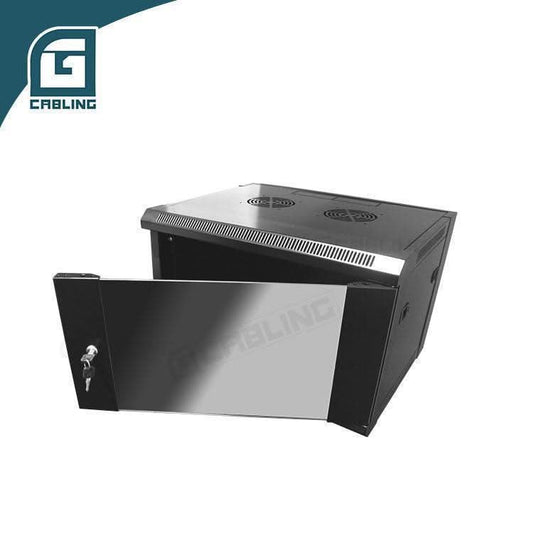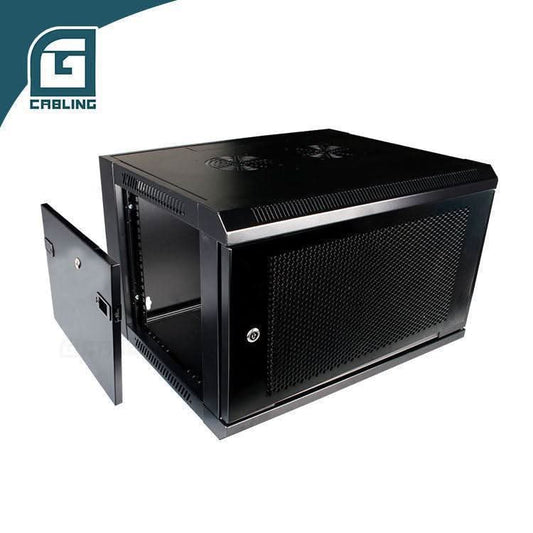How to Choose the Right Server Rack: Depth, U-Height, and Airflow Matters
In today’s global IT landscape, choosing the right server rack is more than a technical task—it's a strategic infrastructure decision. Whether you're upgrading a small server room in the Philippines, expanding a data hub in Spain, or setting up your first network cabinet in Uzbekistan, understanding the key features of server rack depth, U-height, and airflow will ensure system stability, scalability, and long-term ROI.
Understanding Server Rack Basics
A server rack is a standardized frame or enclosure for mounting IT equipment such as servers, switches, PDUs, and patch panels. The global standard width is 19 inches, as defined by the EIA-310 standard, ensuring compatibility across brands and countries like Dominican Republic, Iraq, and Maldives. Choosing the right rack impacts power usage, cooling, cabling, and future equipment expansion.
Depth Analysis: 600mm vs 800mm vs 1000mm
Server rack depth is the measurement from front to rear, and it directly affects how well your equipment fits and how you manage airflow and cables:
600mm depth: Ideal for shallow devices like patch panels and routers. Common in small offices or retail setups.
800mm depth: Balances space and airflow. Suitable for mixed-use cabinets with servers and switches.
1000mm+ depth: Best for high-density servers and data centers, offering more room for cable management and airflow channels.
Countries like Kazakhstan and Bolivia, where equipment import might be varied, should always check exact device depth before purchasing a rack.
U-Height Considerations: 27U vs 32U vs 42U
U-height refers to the vertical space available in a rack. Each "U" equals 1.75 inches (44.45mm):
27U: Perfect for small offices, retail sites, and edge deployments.
32U: A great middle ground for growing environments.
42U: Industry-standard for full-scale data centers.
Organizations in Panama or Libya can future-proof their infrastructure by choosing 42U even if starting small.
Airflow & Thermal Management
In warmer climates like the Philippines, Maldives, or Iraq, proper cooling is critical. Here's how racks help with data center airflow management:
Perforated doors enable passive airflow.
Top-mounted or rear fans improve ventilation.
Blanking panels eliminate hot spots by blocking unused slots.
Avoid using solid-door racks in hot environments unless you have dedicated cooling systems.
Technical Specifications & Standards
19 inch rack specifications ensure universal equipment compatibility.
Static and dynamic load capacity should match your heaviest device.
Grounding and electrical safety are especially vital in regions with inconsistent power supply.
Install PDUs and surge protection to safeguard devices.
All Gcabling server racks comply with ANSI/EIA RS-310-D, IEC60297-2, and DIN41494:PART1, PART7 standards, ensuring global compatibility and durability.
Application-Specific Rack Selection
Each use case demands a different solution:
Small business: 27U wall-mount with 600mm depth
Enterprise: 42U floor-standing, 1000mm depth with airflow optimization
Edge computing: Compact 32U rack with lockable doors and fans
Telecom closet: Shallow rack with high ventilation and front access
Installation & Setup Best Practices
Before you install:
Ensure floor strength, ceiling height, and door clearance.
Plan cable routing with horizontal and vertical cable managers.
Secure racks with anchor bolts if in seismic zones like Uzbekistan.
Implement access control: keyed locks, door sensors, etc.
Cost & ROI Considerations
Invest in quality racks to avoid heat failures or structural issues.
Use our U height calculator for server racks to plan efficiently.
Choose energy-efficient designs to reduce cooling costs over time.
Avoid These Common Mistakes
Overloading racks beyond capacity
Ignoring airflow and thermal planning
Using mismatched equipment depths
Poor cable management causing signal loss or airflow blockages
Summary: Your Complete Server Rack Selection Guide
Choosing the right server rack means analyzing depth, U-height, and airflow, while considering future scalability, energy costs, and global standards. With options like 27U, 32U, and 42U, and depths from 600mm to 1000mm, your ideal configuration depends on current needs and growth expectations.
For global buyers in Spain, Iraq, Panama, Kazakhstan, and beyond, picking the correct server rack size is the foundation of a safe, scalable IT environment.
Need help selecting the right rack for your country and use case? Contact Gcabling for expert support, product customization, and region-specific recommendations. All our server rack products comply with ANSI/EIA RS-310-D, IEC60297-2, and DIN41494:PART1, PART7 to ensure quality, compatibility, and performance.








